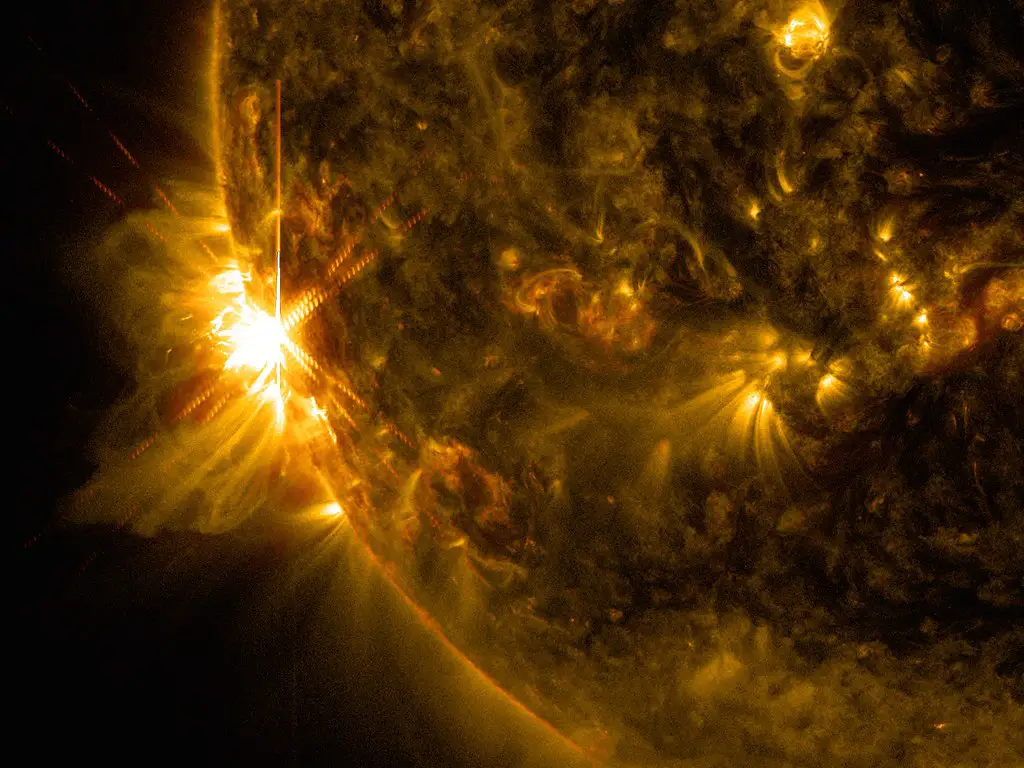The Sun is a fascinating celestial body that has a continuous impact on our lives. It is also the star that is closest to Earth. Solar flares stand out as particularly intense bursts of energy that can have a substantial influence on Earth’s technology and even pose potential threats to human health. These solar phenomena are among the sun’s unpredictable activities. Numerous solar flares have been documented over the course of time, but only a select few can truly be called the largest and most impressive of the bunch. In this piece, we shall scour the annals of history in order to unearth the top three most powerful solar flares that have ever been documented.
- The Carrington Event (1859): The Carrington Event is one of the most well-known and significant solar flares in history. It was named after the British scientist Richard Carrington. It took place on September 1 and 2, 1859, during a time when people were becoming more dependent on telegraph systems in society. Because of the solar flare’s extreme intensity, telegraph communications all around the world were severely disrupted.
During the Carrington Event, a large coronal mass ejection (CME) occurred, which sent billions of tons of charged particles hurtling toward Earth. Auroras could be seen as far south as the Caribbean, and surges in the telegraph networks caused fires and disrupted transmissions. Observers reported seeing auroras as far south as the Caribbean. If an incident like that were to take place today, the repercussions would be much more severe. It would be much more likely that widespread power outages, disruptions in satellite communications, and damage to fragile technological equipment would result. - The Solar Storm of 1989: On March 13, 1989, the Earth was hit by another major solar flare, which led to an intense geomagnetic storm. This storm, which caused a power outage in Quebec and was also known by that name, had significant repercussions for modern technology. Because of the solar flare’s effect on the magnetosphere of Earth, an increase in electrical currents led to the overloading of power networks in the Canadian province of Quebec.
During the solar storm, a failure in the electrical grid owned and operated by Hydro-Quebec occurred, which resulted in a massive blackout that left millions of people without electricity for several hours. Satellites were also impacted, with several experiencing momentary operational difficulties as a result. The occurrence served as a wake-up call, highlighting the precarious nature of contemporary electronic infrastructure in relation to the unpredictability of the Sun’s flares. - The Halloween Storms (2003): In late October and early November of 2003, the Sun was rocked by a series of powerful solar flares and coronal mass ejections, which led to what is generally known as the Halloween Storms. Solar activity during this time period included some of the most powerful explosions ever observed, and X-ray emissions were over the roof.
The Halloween Storms had a significant effect on the magnetosphere of Earth, which led to major disruptions in satellite communications and electrical infrastructures. Because of the increasing radiation levels, airlines were forced to reroute their flights such that they avoided the arctic regions. In addition to this, the storms produced breathtaking auroras that could be seen in portions of the United States that are not often prone to seeing them, such as some areas of Florida and Texas.
Solar flares are mesmerizing demonstrations of the Sun’s unbridled power and have the potential to have huge repercussions for our society and the advancement of technology. Three of the most significant solar flares in history are the Carrington Event, the Solar Storm of 1989, and the Halloween Storms of 2003. These incidents serve as reminders of the need to better understand and prepare for the potential implications of intense solar activity in our increasingly technology-dependent world. These instances serve as reminders of the need to better understand and prepare for the potential repercussions of powerful solar activity. The ability to forecast solar storms and develop countermeasures is becoming increasingly important as humankind expands its reach into space and increases its reliance on increasingly complex electronic systems.
![]()
